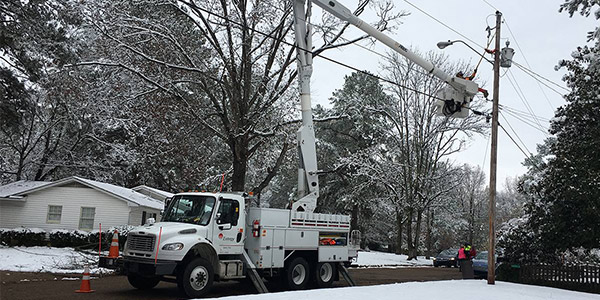MISO is calling on expertise from its local balancing authorities to help improve load forecasting, RTO engineers said Tuesday.
Operational Forecast Planner Adam Simkowski said during a special workshop that the call for LBA involvement stems from the Jan. 17, 2018, cold spell that caused MISO and SPP to call for voluntary load reductions from customers and nearly forced load shedding in MISO South.
FERC last year issued a report on the event that , among other things, called for improvements to MISO’s three- and five-day-ahead load forecasting. The commission recommended that the RTO work with its LBAs to achieve better results. (See FERC Calls for Cold Weather Reliability Standard.)
MISO is interested in learning more about how LBAs conduct forecasting and is asking them to share their methodologies and accuracy assessments, Simkowski said. He asked LBAs to contact the RTO by June 9.
Simkowski said MISO is so far concentrating on becoming more accurate with events that can be anticipated three and five days out, including snowstorms, tropical depressions, and substantial temperature swings and deviations.
LBAs already submit day-ahead and seven-day forecasts to MISO daily. Simkowski said the RTO’s load forecasts are generally more accurate than those submitted by the LBAs.
To build forecasts, MISO combines data into its software from LBAs, its own seasonal modeling, historic load data and live load and weather data. It shares the forecasts with customers, who can offer adjustments. MISO forecasters can manually adjust the forecast model if they don’t agree with the software results. The RTO also checks forecast accuracy later.
MISO creates an hourly load forecast for control room planners that is updated every 15 minutes and extends seven days out. It also generates a five-minute forecast updated every five minutes that looks six hours ahead.
The RTO also estimates daily peaks over the next 31 days for the purposes of outage coordination.
Senior Operational Forecast Engineer Dorsana Desai said most of MISO’s load forecasting errors can be attributed to weather that doesn’t behave as predicted.
“One degree of temperature forecast error results in up to 2,000 MW of load forecast error,” she said.
MISO missed its load forecasting mark most egregiously on Sept. 15, 2018, Desai said, when MISO planned for about 85-degree Fahrenheit temperatures on average. Actual temperatures clocked in closer to 89 F, resulting in a 7.6-GW under-forecasting error.
Desai also said the 2017 solar eclipse in mid-August eluded MISO forecast engineers. The event — and widespread cloud cover and thunderstorms following soon after — had the RTO overestimating load by about 6 GW. Desai said MISO expected demand to rebound after the eclipse.




